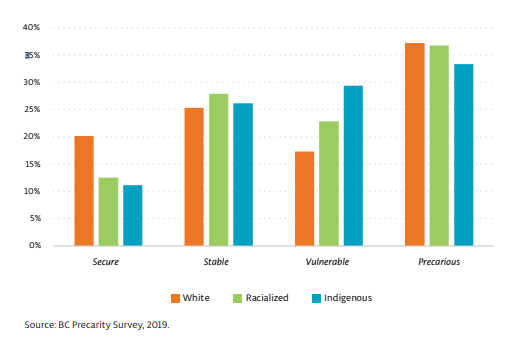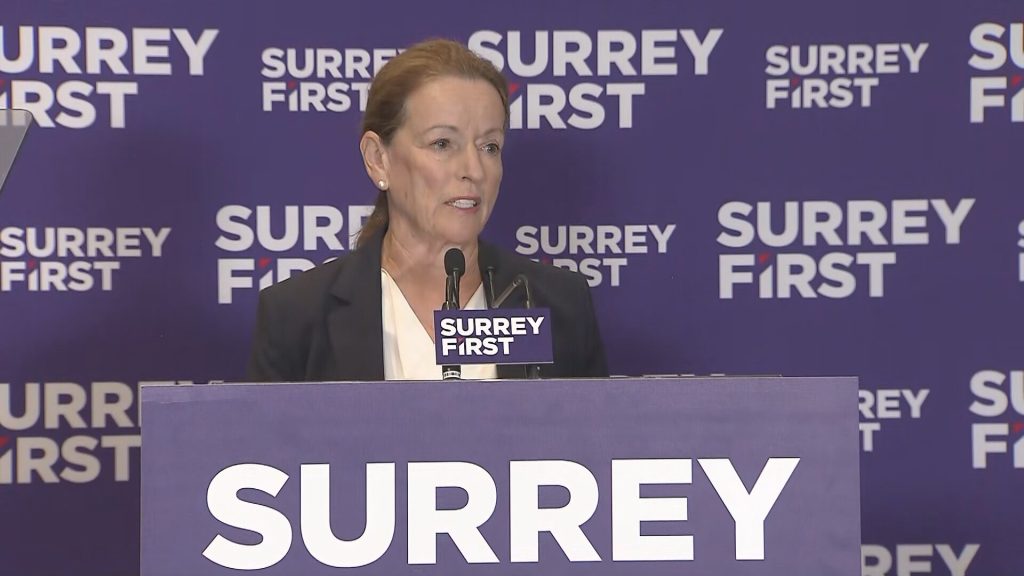Over half of B.C. workers are in the gig economy, study finds

Posted April 14, 2023 4:44 pm.
Last Updated April 17, 2023 1:44 pm.
It appears people with permanent, full-time jobs with access to benefits are in the minority in B.C., according to a study led by a Simon Fraser University (SFU) researcher.
But is it a good job? Understanding employment precarity in BC was published on April 13, and draws upon questions asked to workers about how they make a living. The survey was conducted prior to the COVID-19 pandemic.
SFU researcher and co-author of the study, Kendra Strauss, explains the respondents’ answers helped form a continuum of sorts, ranging from “secure” to “precarious” to describe their job situation.
“Where you have stability, where you have good pay, where you have access to benefits, where you have permanence, that’s the stable category. And then the precarious job category on the other end of the spectrum is where you see the least security and stability and job quality,” she told CityNews.
Related Stories:
-
Economy keeps adding jobs as population grows, despite high interest rates
-
B.C. projected to have over 1M job openings in next decade: Gov’t
The findings found that under half (49 per cent) of respondents had a “secure” job — a full-time, permanent, continuing position with access to some form of benefits.
The remaining 51 per cent were classified as having some level of precarity in their work — a feature of the “gig economy.” Things like lower or inconsistent pay, erratic schedules, lower likelihood of unionizing, and lack of access to benefits are included in this category.
“It indicates an issue of insecure work that’s maybe more widespread than we thought,” Strauss said.
Racialized groups more likely to have precarious jobs, study finds
When the numbers are more closely examined, it showed some differences in what demographics make up different points of the spectrum.
The highest number of respondents who identified as having a “secure” job were white, at 20 per cent, with lower numbers of racialized and Indigenous people in the category. On the other end of the continuum, white, racialized, and Indigenous people were all found in the “precarious” category in equal numbers.
“What that suggests is that insecure and precarious employment makes worse some of the existing inequalities that we have in our society,” Strauss commented.

Kendra Strauss’ study found that Indigenous and racialized people make up a larger proportion of precarious labour in B.C. (Source: Canadian Centre for Policy Alternatives)
The researcher points to app-based work like Uber or food delivery services as jobs that new immigrants, Indigenous men, and racialized women are more likely to have.
“People in the precarious category are far less likely to choose that kind of work. They tend to be the jobs that are available,” she said.
Strauss says when the numbers are looked at in a historical context, it shows a change in B.C.’s labour market.
Precarity in jobs: then and now
While the numbers show that more people in B.C. are looking to precarious work to make a living, Strauss points out that this is part of a historical trend.
Looking at the decades after World War II, she says the strong majority of jobs in virtually all industries were secure. She gave the example of government work, which was once a stable, permanent job that people could hold for their whole lives if they wanted to.
“What we see now, particularly for young workers, is they might go into those jobs on one-year contracts, they might hold several of those contracts and there’s no guarantee of necessarily graduating to a full-time, continuing position,” she explained.
Given that the data from her study was collected before the onset of the pandemic, Strauss says precarity in the labour market has likely increased.
“We’re expecting to see that precarity has exacerbated for some workers despite a tight labour market,” she said.
“I think one of the things we’re going to find is that the trouble that people have making ends meet has only gotten worse. Inflation has really contributed to that and we may see uneven impacts throughout the province.”
What can be done?
Strauss says her study is the first of its kind in the context of B.C., drawing inspiration from a similar survey conducted in Ontario around the Greater Toronto Area.
Since the survey in 2019, she says there have already been changes made in the province that could help precarious workers.
“There was a significant proportion of workers in our study who had access to no paid sick days at all before the pandemic. So it really shows that government policy that supports workers who don’t have access to benefits, they really can make a difference,” she said.
She says other things that could be done include minimum wage protection for all workers in B.C. and universal access to worker’s compensation.
Looking ahead, Strauss says she’s already planning another survey to look at how the pandemic has affected precarious work, hoping her findings can inform government labour policies.








